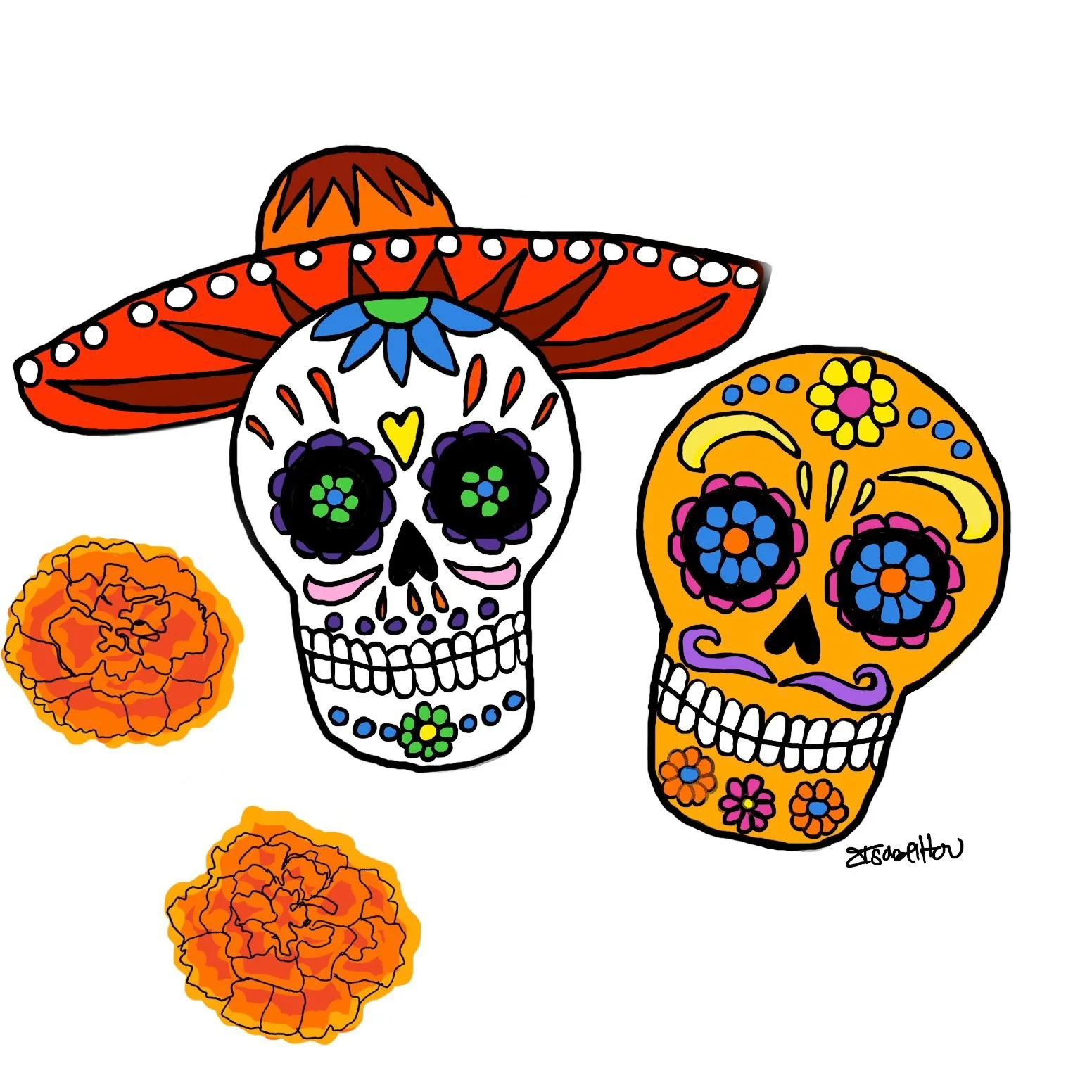When Fiction Writes on Tradition: James Bond and the Day of the Dead, 10 Years Later
(Illustration/Isabel Hou)
By Carlos Aguilar
Perhaps no Mexican holiday enjoys greater international recognition than the Day of the Dead. This celebration’s global popularity surged following the release of two films over the past decade. Lee Unkrich's Coco (2017) depicted many traditions, with reasonable fidelity, through which we commemorate the departed across Mexico's diverse regions. Dante, the Xolo dog (breed gifted by Xolotl, Nahua god of the dead), guided the characters back and forth from the underworld, following the cempasuchil flower to the altars and the underworld.
Other blockbuster depictions, however, have been less accurate. Two years earlier, Sam Mendes' Spectre opened with 007 pursuing his target across Mexico City rooftops, weaving in and out of an elaborate Day of the Dead parade. The aesthetics of such an assembly captivated the audience, but a portion of the Mexican audience recognized immediately what others were missing: no such parade existed. Then, in 2016, the city's government capitalized on this attention. Ten years on, millions still gather on November 2nd to celebrate a parade that did not happen before this film. Thus, MI6's most celebrated operative became part of a public policy initiative that included the revival of Formula 1 in Mexico City, both spectacles engineered to project Mexican culture while capturing international attention.
The Day of the Dead melds pre-Hispanic culture with Catholic tradition to honor the temporary return of deceased relatives and loved ones to the world of the living. Recognized as Intangible Cultural Heritage of Humanity since 2003, this celebration, typically observed on November 2nd, remains an evolving tradition with diverse representations. In Sumpango, Guatemala, people fly gigantic kites, or barriletes, in the sky, while in the city of Patzcuaro, Michoacan, Mexico, the community crosses Lake Pátzcuaro by canoe to reach the cemetery of Janitzio island. This canoe journey shares similarities with the year-round trajinera boat ride in Xochimilco, but it is expressly themed for the Day of the Dead season.
An exhaustive catalog of how families celebrate the Day of the Dead across Mexico and Latin America would reveal innumerable manifestations, yet some celebrations are shared across many different communities. Families construct home altars bearing offerings for the deceased: their favored foods, pleasures, and earthly delights. They visit cemeteries to clean and adorn graves, often holding gatherings as though the departed were present, revitalizing both the spirit of the resting soul and their family’sown hearts.
In Spectre, however, the cinema took creative liberties. Curiously, a parade resembling the fictional procession that Bond runs through did not exist before 2015. While cemetery processions remain customary in many locales, none featured the allegorical floats or monumental catrinas that Mendes depicted in Spectre—though monumental alebrijes do appear in certain Oaxacan celebrations.
This parade was influenced by an $18 million investment by Mexico's Tourism Promotion Council to attract the production to Mexico City and showcase its culture. At the same time, the Mexican government was actively implementing Mexico Orgullo del Mundo, an initiative promoting Mexico culturally and touristically through massive international events. As part of this, the government committed $213 million to a $413 million deal that restored the Mexico City Grand Prix to Formula 1's calendar. The race took place for five consecutive years, earning Formula 1's Best Event of the Year award, alongside generating over $2.4 billion in economic activity and creating 57,000 jobs in Mexico.
Both the parade and the race generated so much momentum that they were scheduled consecutively (though not on the actual Day of the Dead) until the pandemic intervened. Following the 2020 cancellations, the Grand Prix was contracted for three additional years, while the parade has expanded into a comprehensive festival spanning from race weekend until the actual Day of the Dead, complete with concerts and youth activities. Revelers often seem oblivious to how this new Mexican tradition was conceived, remarkably, by a British film director.
Thus, the Day of the Dead assumes a peculiar duality in contemporary Mexico: the intimate domestic altars and cemetery vigils endure as they have for generations, while a massive public parade—born from cinematic fiction and economic calculation—now commands the public’s attention each autumn. This bifurcation invites competing interpretations. Columbia University anthropologist Claudio Lomnitz critiques the parade as an example of “national-narcissism,” arguing that Mexico seeks validation by projecting its cultural identity through Hollywood's lens, transforming what was once artisanal into something industrial. An alternative perspective suggests this evolution reveals how live celebrations and cultural heritage operate in a globalized world: tradition serves both as a lived, ever-evolving practice to celebrate and commemorate, as well as a marketable spectacle.

